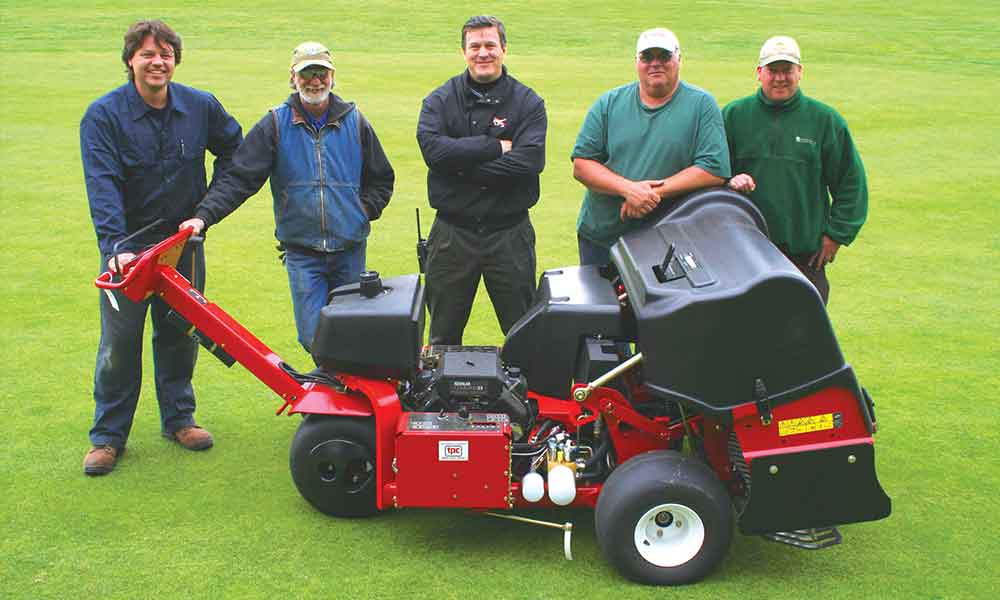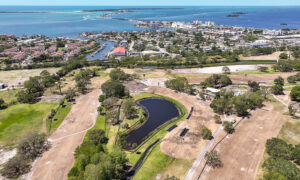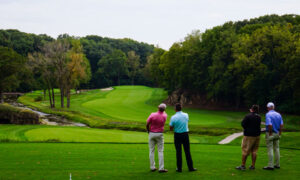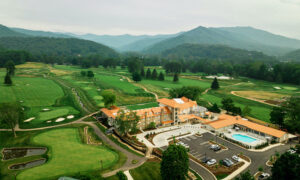Reading through my fellow Golf Course Superintendents’ articles here in recent issues, I thought it would be great to let all of you know about this “tool” I have already let our GCSANE (Golf Course Superintendents Association of New England) members in on. Thanks to The Golf Course Trades, I can share it with all of you.
With everything in the world-changing around us, it can be difficult to keep up with the latest and greatest when it comes to technology. With the birth of plasma televisions, GPS navigation systems, iPhones, and wireless internet access along comes a technology that every golf course superintendent should take advantage of digital photography.
With this technology being a few years old, camera companies competing for your business, the decreasing cost of a digital camera, and the user-friendly improvements associated with this technology; there should be no reason to procrastinate when it comes to buying your first digital camera.
Photography in general has been a valuable tool over the years for superintendents but lately, it has become easier than ever to produce high-quality photos thanks to this great technology.
Salem Country Club is a Donald Ross gem that has hosted 5 USGA championships and is a regular in the top 100 ratings in America. One of my greatest memories was being able to prepare Salem CC for the 2001 United States Senior Open Championship. My photography came in handy before the U.S. Senior Open as my photographs were used on the tickets for the championship. Before my employment at Salem CC I landed jobs at Grassy Hill Country Club in Orange, Connecticut as well as Willamette Valley Country Club in Canby, Oregon.
Since 2004 I have been the golf course superintendent at the Segregansett Country Club in Taunton, Massachusetts. Segregansett was established in 1893 and is one of the original 100 clubs in America. “Seggy” as it is called was designed by Alexander Findlay (1893) and Geoffrey Cornish (1977) and is one of the charter members of the Massachusetts Golf Association (1903). The private 18-hole layout is always one of the toughest to play in New England. I have been blessed with a supportive membership and a great staff led by Tate Asselin (assistant golf course superintendent), Jon Astle (chief mechanic), Ed MacNeil (foreman), and Ken Dupree (spray technician).
The second kind of camera is called the SLR (single-lens reflex) or DSLR (digital single reflex) camera. A digital single-lens reflex camera is a digital camera that uses an automatic mirror system and pentaprism or pentamirror to direct light from the lens through the viewfinder eyepiece.
These cameras offer a wider range of advanced features including interchangeable lenses, higher megapixels, manual controls, and interchangeable accessories such as filters and flashes. The cost for a good SLR camera can range from $500 to $5000. You can get a fantastic camera for around $1000.
If you decided to buy the point-and-shoot camera you have very little flexibility and you have to live with whatever the pictures look like. If you buy the SLR camera you will have lots of flexibility and you will need to know some of the basic features of your camera. If you’re going to be taking great pictures you need to know how to achieve the proper exposure.
The two keys to successful exposure are understanding the two controls for light which are shutter and aperture. The shutter controls the speed at which the opening in your lens will open and close. The longer it remains open the more light will get through. Too long will overexpose your picture and too short will underexpose it. The aperture is the size of the opening in your lens. The wider it opens the more light will get through and the smaller it opens the less light will get through. Too open will overexpose your picture and too closed will underexpose your picture.
What kind of camera should I buy and what do I look for?
These are the two questions I get asked the most. There are two basic kinds of cameras. The first is what is called the “point and shoot” style cameras which take a lot of the guesswork out of picture taking. They can be very effective, very handy, and fit comfortably in your pocket. The prices for this type of camera generally range from $150 to $350.
Even though the cost is reasonable and they are very user-friendly this camera does have its limitations. You can’t change the lens, the zoom features are few, the settings are not advanced, and there are no manual controls. If this is your camera of choice try to make sure the camera features a high amount of megapixels. A megapixel is 1 million pixels, and is a term used not only for the number of pixels in an image, but also to express the number of image sensor elements of digital cameras or the number of display elements of displays. The more megapixels the better.
Generally, any camera with megapixels above 6 is going to take good pictures. I would hope that every superintendent would at the very least have one of these cameras and take advantage of all they have to offer. Before you leave the store make sure you have the proper memory card for your specific camera. Memory cards are measured by gigabytes (GB) and the more the better. A gigabyte is a unit of information or computer storage meaning exactly 1 billion bytes. A memory card of 1GB will be plenty and a 4GB card will last you forever.
Photography101
A small aperture will give you more depth of field which means that objects in the foreground and background will be clear and in focus. For golf course photography you will be using a small aperture. If you wanted to focus on just a flower or a golfer and wanted the background blurry you would want to use a larger aperture.
What else do I need to know?
Once you have your camera, know the basics about proper exposure, and have an understanding about depth of field, you have a great foundation for taking great pictures of your golf course. There are a few tips however that will help you before you start clicking away.
- Shoot at an angle to the light or sun. Never shoot directly into or away from the sun.
- Take both horizontal and vertical pictures of your course. Most scorecards, magazine covers, pamphlets, and books use the vertical angle.
- Back up your images. Once your images are on your memory card you want to transfer them to a computer and finally burn them all onto a cd. You can then delete the photos from your memory card for re-use.
- Take advantage of the latest Photoshop software and become savvy on how to improve your photos.
- Take advantage of any classes that may be offered to you. The Golf Industry Show offers a great class taught by John R. Johnson called “Comprehensive Photography Instruction for Golf Courses, Personal Images, and Projects.” Johnson was a 2 time “National Golf Photographer of the Year.” The USGA offered a great class at the New England Regional Turfgrass Foundation show in Providence last March as well.
- Take advantage of when your course looks best. October when the foliage is peaking, in August when your flowers are full, and in late spring when your grass is at it’s greenest are all great times to shoot.
What do I do with all these great new photos of my golf course?
Hopefully you will put together a nice collection of photos of your golf course and will have many valuable uses for them. Some of the things that you can do with your digital photos:
- Provide your employer with great photos for the club’s website.
- Communicate with your employer via email on any projects or equipment that you need to update them on.
- A PowerPoint presentation for your committee or board of directors is always impressive.
- Promote your golf course, tournaments, and events.
- Build pamphlets and market your course.
- Provide photos to any media outlets that may be featuring your golf course in their publication.
- Hang a few in the clubhouse and ask if you could make them available for sale. You could generate revenue for your club. Over time you will have enough photos to build a great portfolio as well.
One final thanks!
I want to thank Mr. and Mrs. George Mendoza for allowing me to capture the cover photo of this very issue of The Golf Course Trades. George and Alice have lived in North Dighton for 57 years and happen to live behind my 14th green. They allowed me to stand on the roof of their home to take the photo you see today.



























